My Collage
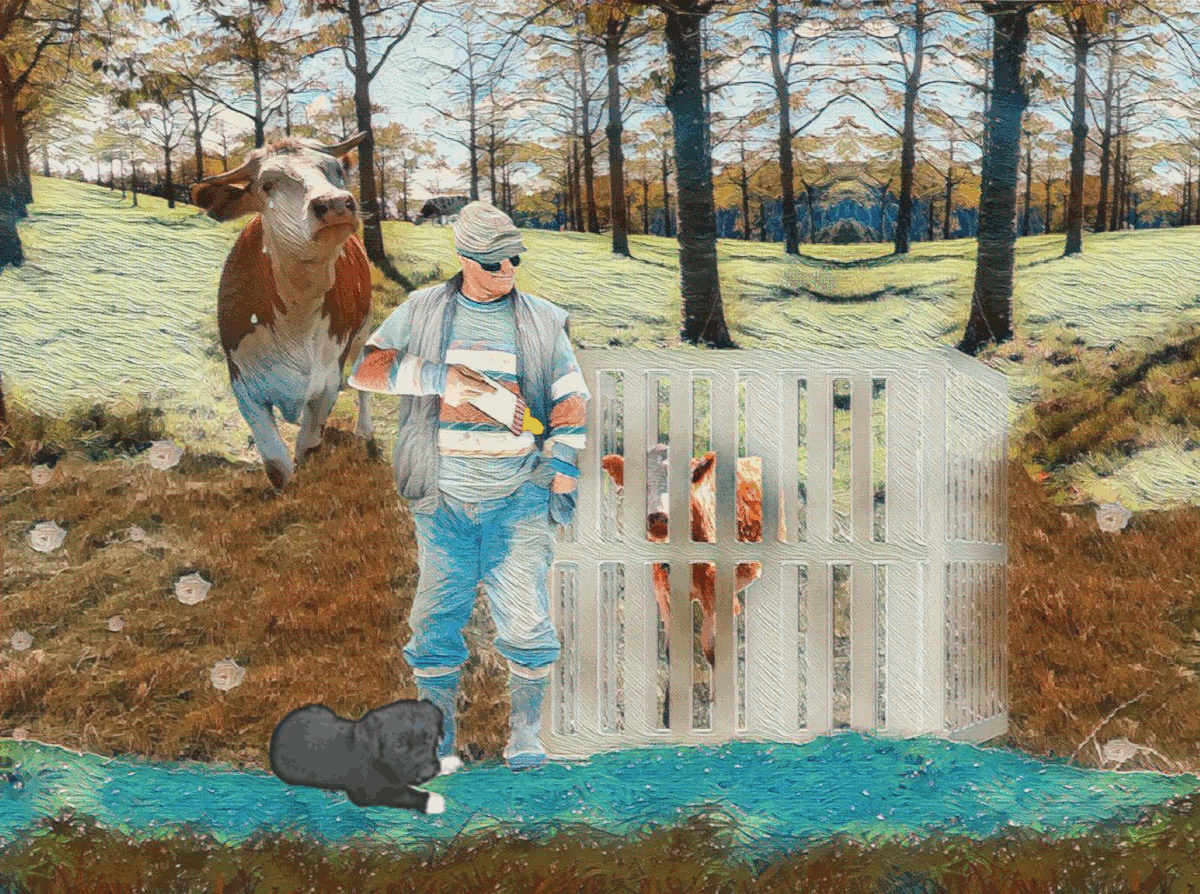
This week's template, by @quantumg.

I love the picture. Although, as I started reading about cows I discovered some rather startling information (startling to me). The information became the subject of my blog and my collage.
"...A Bull Shattered a Farmer's Life". Have you ever read a headline like this? Or have you read something like this: "Woman Killed by Bulls She Reared"? Why do such things happen? I used to think it was because the bulls were aggressive, genetically. Or, that they might have been abused, and this made them mean. However, I recently read something quite contrary to these views. Bulls attack sometimes because as calves they were treated very kindly by their human caretakers.
Wild Bull in Venezuela
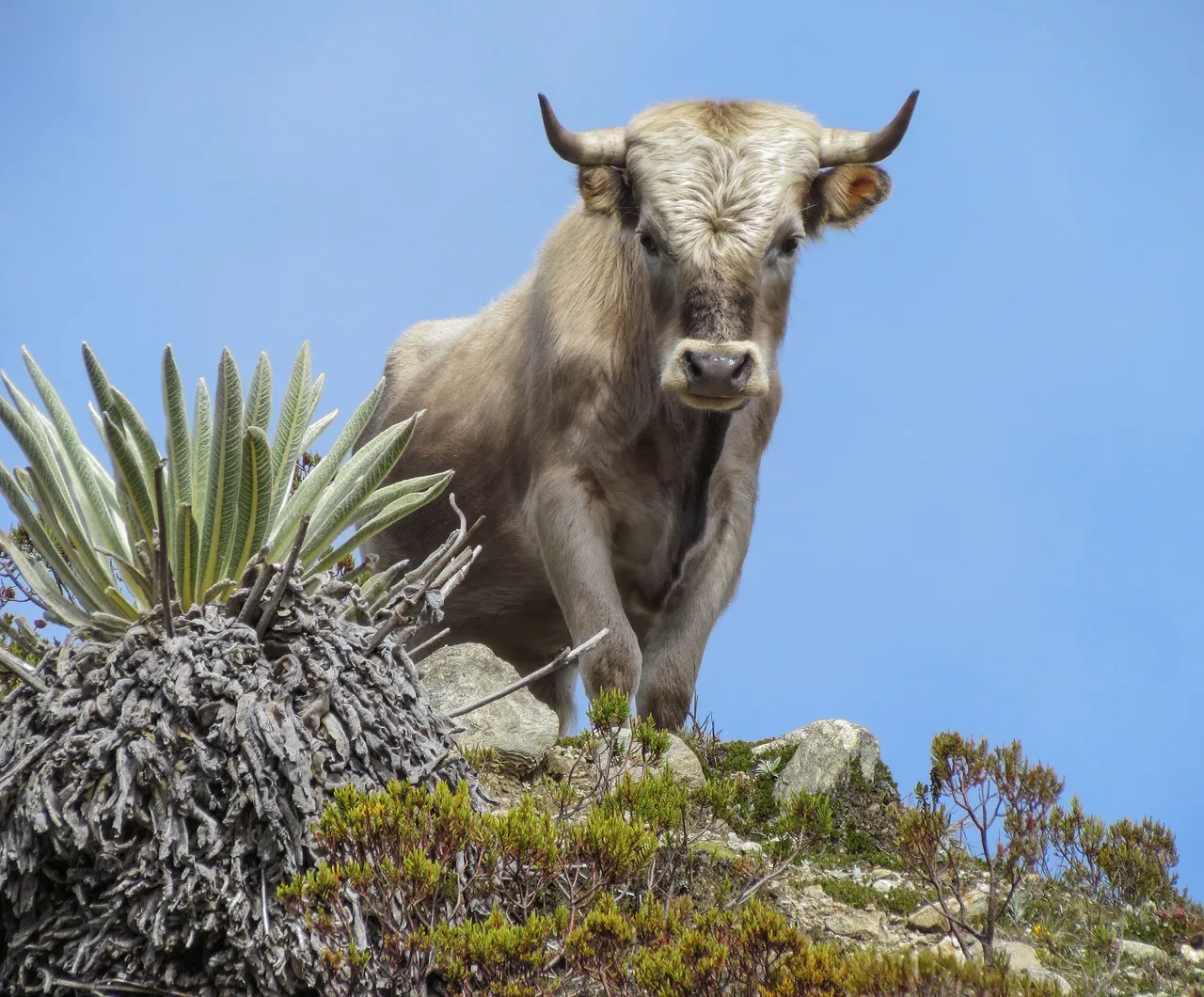
Credit: Wilfredor. Used under CC 1.0 license
Sounds crazy, doesn't it? Not so crazy if you consider the theory of imprinting popularized by Konrad Lorenz in the 1930s, and studied by other ethologists since then. Lorenz demonstrated that during an early stage in development, an animal will 'imprint' on anything, become attached toit. The object to which the animals becomes attached must be introduced at a critical time in the animal's development.
In one experiment, to demonstrate his theory, Lorenz separated goose eggs into two groups. One group he placed under the goose mother and the other he placed near him. The goslings that hatched under the mother recognized her as their parent. Those that hatched with Lorenz identified him as their parent. When it came time to follow goose or human, the Lorenz-imprinted goslings followed him and not their true mother.
In 1966, another biologist, D. Guiton, conducted another imprinting experiment. He fed newborn leghorn chicks while he was wearing yellow gloves. The chicks imprinted on the gloves. Later on, when the male chicks reached sexual maturity, they tried to mate with the gloves.
Leghorn Chick
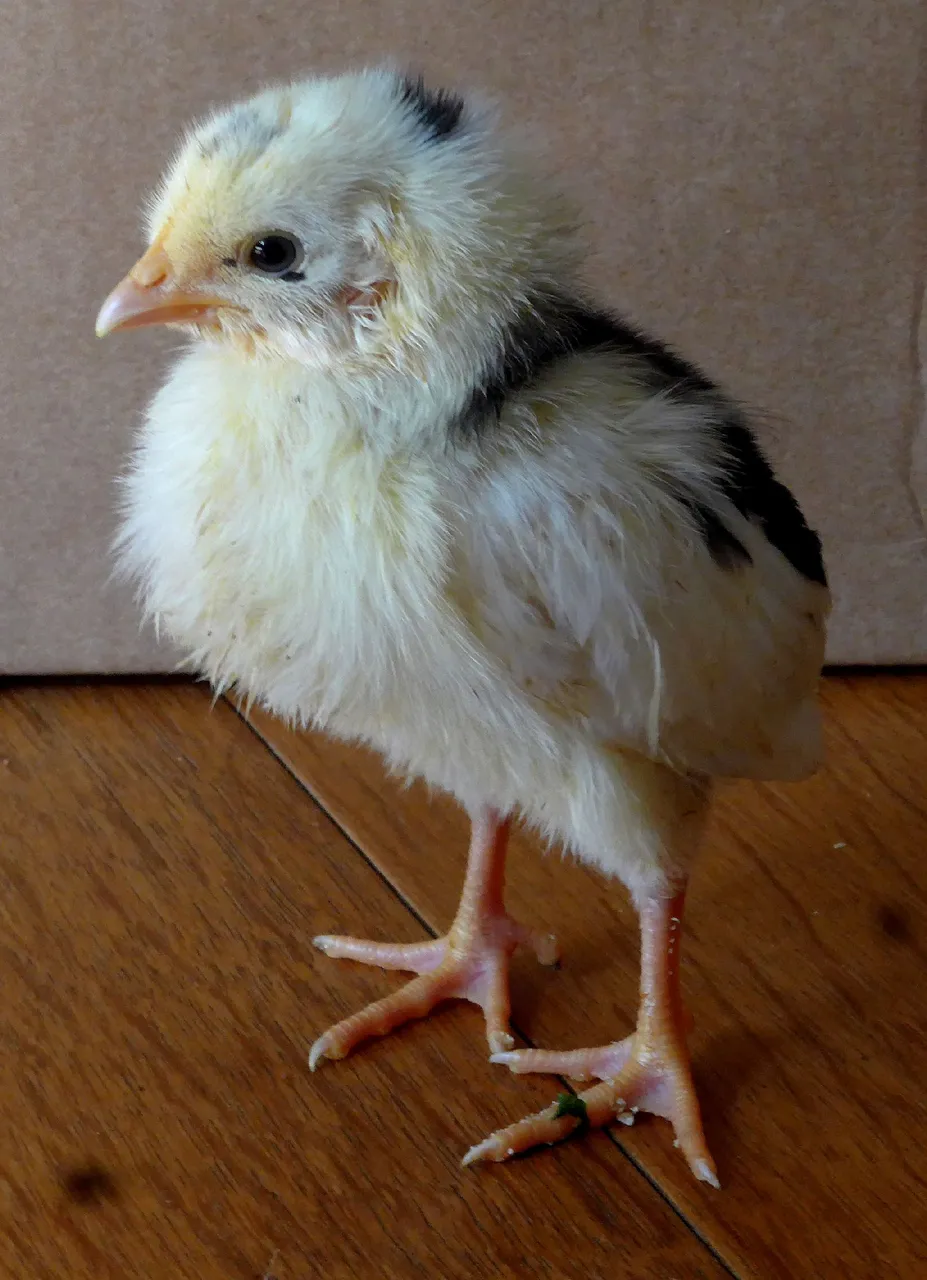
Credit: Arie M. den Toom. Used under CC attribute and share-alike 4.0 license.
This is where the explanation for aggressive bulls comes in. In news articles featured at the beginning of this piece (bulls attacking women farmers), the bulls had been hand fed. In the first article one may read this line: She (the injured woman) goes back to the days when Bandit was a calf and wonders if bottle feeding him had anything to do with the attack. According to current thinking, that may be exactly what happened.
A 2023 article published in Western Producer carries this title: "Bottle-fed Bulls Can Grow Up to Be Mean". The theory expressed in the article is that a bull removed from its mother early and bottle fed by a human imprints on that human. There may be a loving relationship formed. However, when the bull reaches maturity, he will do what bulls do when they are sexually active: he will eliminate the competition. If the bull has imprinted on a human, then the human is the competition.
In a herd, bulls fight for dominance for the right to breed with available females.
An earlier article (2021) published in the Western Producer, asserts that:
...the story is often about mature dairy bulls, people who don’t know any better are adopting male deer, elk or bison as ‘pets,’ and when they get older, someone is getting hurt by them, or worse
The author of this article explains that there is a period of 20 to 30 hours after birth when the animals don't know who their mother is. Nature requires them to identify with a parent, so they can follow that parent and survive. Whatever moving thing is presented to them during this susceptible time will become the object upon which they imprint.
With cattle, the effect of imprinting is intensified if the animal is not only bottle fed, but is also isolated from the herd. The growing bull will not identify with its own species but will view humans as the appropriate target for its competitive mating behavior when it reaches maturity.
Why is the Cow Crying in My Collage
Newborn Calf With Mother
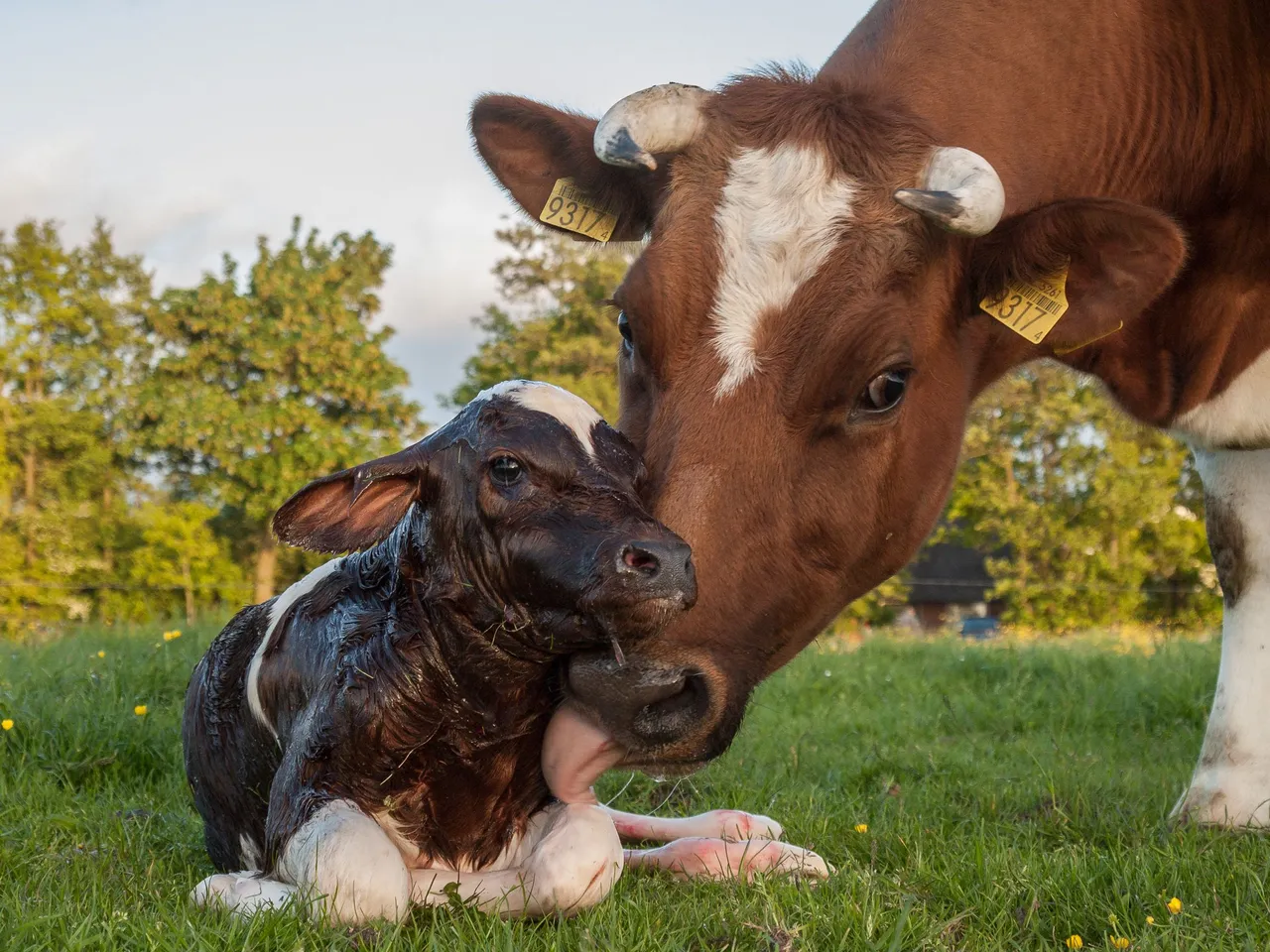
Credit:Uberprutser. Used under CC 3.0 Attribution Share-alike license.
Cows are social animals. They form close attachments to their calves. An article published by the RSPCA (Australia) describes the distress of a mother when she is separated from her calf. The distress includes calling for her calf, and a loss of appetite. According to the website Animal Australia, "Mothers have been known to grieve for days after their calf is removed, bellowing loudly in distress."
As for the calf, if it is removed from the mother after bonding has occurred, not only does it cry for its mother, but there is actually a disruption in its immune function.
And so the cow in my collage cries.
I wasn't the only one who loved this week's template picture featuring a cow. So did many other participants in LMAC's collage contest this week, Round #213. (I don't compete because I am on the jury.) Check out our website to see some of the pictures published in the community.
In making my collage I borrowed from the LIL Gallery, which was created by LMAC and built by our community, and I also borrowed from Pixabay.
I thank the following contributors from LIL:
White Flowers
@yaziris
https://www.lmac.gallery/lil-gallery-image/7645Puppy
@muelli
https://www.lmac.gallery/lil-gallery-image/6144Grass
@onyechi
https://www.lmac.gallery/lil-gallery-image/414
From Pixabay I thank the following:
- Grass in foreground
https://pixabay.com/es/photos/giants-causeway-ireland-5975234/
Farmer
https://pixabay.com/es/photos/agricultor-hombre-de-pie-330388/Baby bottle
https://pixabay.com/es/vectors/botella-pez%C3%B3n-f%C3%B3rmula-rosado-leche-3124Metal Fence
https://pixabay.com/es/vectors/metal-tabl%C3%B3n-armadura-loseta-146757/
Process:
I began with a metal fence and a calf. I had to build a cage from the fence and then put the calf in it. This was the hardest part of the collage.

I found a farmer on Pixabay,
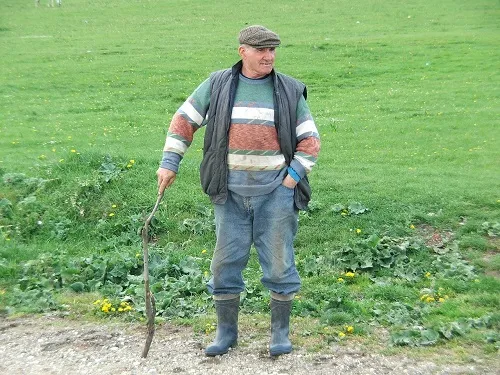
and modified him by changing the position of his hands, putting sunglasses on him and increasing the cap size.
I went back to the template, added two different types of grass and flowers to the foreground. Then I inserted the caged calf, added a puppy, and put a bottle in the farmer's hand. I ran the whole thing through a Lunapic filter.
Here is a still of the base picture this effort achieved.
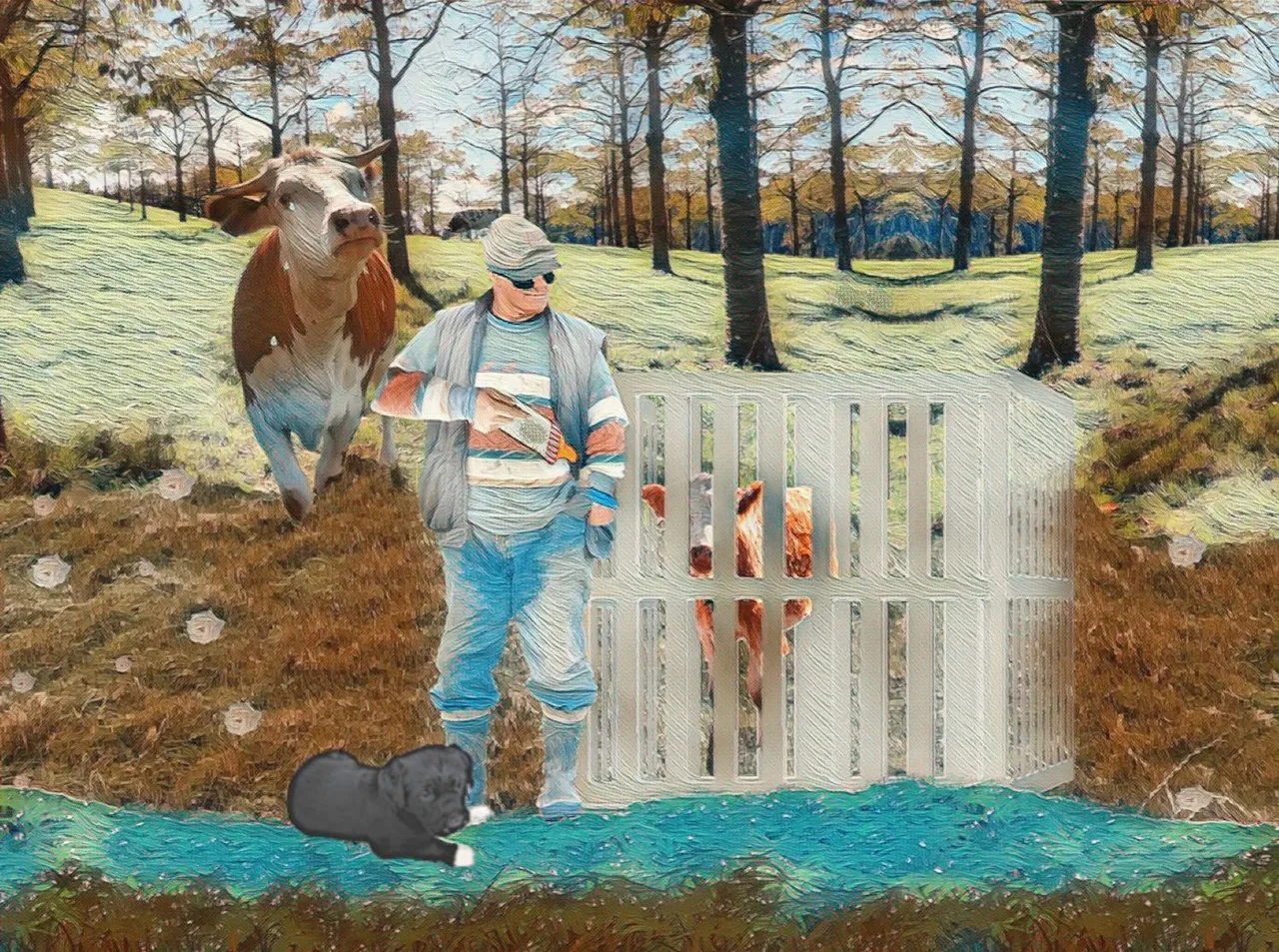
Now I was ready to make the frames for a GIF. I wanted the cow to shed tears over her lost calf. The farmer and the calf had to be in the picture. The puppy's head moves once, as the farmer starts to feed the calf. I used Paint, GIMP and Paint 3D to achieve the end effect.
This is the result (shown also at the top of the page):

LIL is not only a valuable image resource for the Hive community, but is also a way for community members to participate in LMAC. Anyone on Hive can contribute to the library and everyone can borrow from it. Learn about the procedure here.
Every week we offer prizes to fifteen finalists in the contest, but it's not only the prizes people create for. I personally spend hours giving vent to my imagination. Others in the community have developed the habit of 'speaking' through collage.
This week's contest has concluded. A new contest will begin on Thursday, with a brand new template. Please join in the fun.
As @shaka has said many times, everyone is an artist. I may not be an artist in the technical sense, but LMAC allows me to nurture my own unique artistic voice.
Thank you for reading. Peace and health to all.